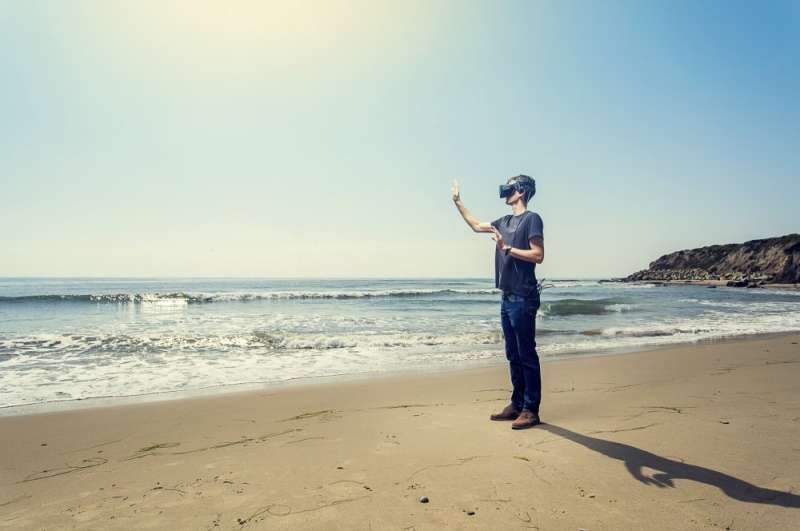Biologist examines the benefits and drawbacks of virtual and augmented reality in teaching environmental science

Virtual reality has nothing on nature. Just ask the UC Santa Barbara students who one recent day trekked to a forest before dawn to listen to a chorus of early birds.
They had hiked into the woods for that very purpose as part of a field study course, tasked with identifying as many species as possible by their vocalizations. After 20 minutes, most had picked up the territorial call of the a red-shouldered hawk and two acorn woodpeckers chattering in the trees. A few careful listeners detected the twitter of a hummingbird.
Amid their discussion of birds, no one expected to meet up with a mammal cameo. But when UCSB biologist Douglas McCauley, who co-teaches the class with Hillary Young—an associate professor in the campus's Department of Ecology, Evolution and Marine Biology—emerged from the bushes with the small rodent in hand, he delivered a brief impromptu lecture about its features and then let it go.
That kind of spontaneous encounter—and the feeling it evokes—would be next to impossible to reproduce in a virtual reality (VR) setting. It's the kind of unpredictable thing nature does best, inspiring awe and wonder—and hopefully a love of learning outdoors.
In a new paper in the journal Science, McCauley discusses the pros and cons of VR and augmented reality (AR) as environmental science teaching tools. "While they have a place in the pedagogical toolbox, the newest technologies aren't necessarily the best options," he said. "It's unclear whether they improve on more traditional methods like taking students outside before dawn to listen to birds."
Rapid advancements in VR and AR have recently opened up a new genre of "electronic field trips" that mimics hikes, dives and treks through nature. Half a dozen UCSB seniors enrolled in McCauley's Laboratory and Fieldwork in Vertebrate Biology course, however, said they wouldn't have traded the experience of seeing their professor wrangle a rodent for staying in bed and using VR goggles to "recreate" the encounter at their leisure. In fact, many said the field trip marked the first time in years they had sat quietly in nature, listening and learning, for more than a couple minutes.
Nonetheless, according to McCauley, both VR and AR have their potential upsides, such as the capacity to move back and forth in time.
"With virtual reality we could have transported the students on our birding trip back to a Pleistocene dawn in those same woods when they were full of 20-foot-tall ground sloths and hungry saber-tooth tigers," McCauley said. "Or we could have taken them forward in time to a climate-altered future where bird migrations had been disrupted."
In the paper, McCauley argues that AR holds some promise if not used heavy-handedly. Consider Harvard University's AR simulation of Black's Nook Pond in Massachusetts, in which users can take photos of pond wildlife, catch bugs in the mud, measure virtual weather, collect population data and sample water chemistry using their smartphone.
At certain points predetermined by GPS coordinates, a digital teaching assistant appears, who might prompt participants on how to take a water sample. Or, when the smartphone is shown a plant, the program could supply an animation of a carbon atom moving through the plant during photosynthesis.
"You have this augmented experience of looking at a detail or process you can't see in real life," McCauley explained. "I think there's an interesting possibility there to enhance the outdoor experience. But how far do you push that before you lose some of the core values of being in nature: the opportunity to chat with the person next to you rather than staring at your phone, or the capacity to actually see the plant and experience nature with your own eyes rather than on a digital screen."
More information: "Digital nature: Are field trips a thing of the past?" Science (2017). science.sciencemag.org/cgi/doi … 1126/science.aao1919
Journal information: Science
Provided by University of California - Santa Barbara





















